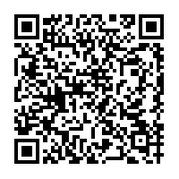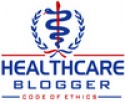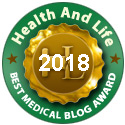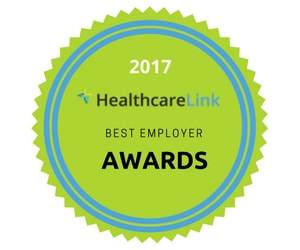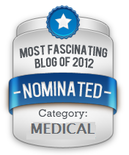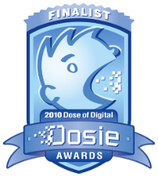Even Rep. Paul Ryan’s new recipe for fiscal Nirvana is touting patient-centered health care as one of a litany of fictional achievements made possible based on an array of wishful thinking assumptions. But perhaps the most common usage of patient-centered terminology is the Patient Centered Medical Home (PCMH), which is touted as the ultimate patient friendly solution to our health care difficulties. Since PCMH is heavily reliant on Health Information Technology (HIT) to achieve patient-centeredness, and since Meaningful Use of Electronic Health Records (EHR) is being increasingly aligned with this goal, it may behoove us to explore the features and functionality that would qualify an EHR to support a patient-centered approach to health care delivery.
But first, what exactly is patient-centered health care? From reading the NCQA medical home specifications, the Meaningful Use definitions, the HIT suggestions from PCAST and the brand new ACO regulations, all of which assert a patient-centered approach, one would conclude that patient-centered care is made possible by providing all patients with timely electronic access to the entirety of their medical records including lots of patient education, electronically coordinating a multitude of transfers of care, empowering non-physicians to provide most medical care, measuring a bewildering array of health care processes and constantly evaluating and reporting on population metrics, while somehow allowing patients and families to express their wishes regarding the nature of care within the boundaries specified by each proposal. I am excluding the Ryan budget proposal here, since other than having “patient-centered” typed in various spots, there is no reference to actual health care delivery, or what is left of it after most seniors, sick and disabled folks are reduced to begging for medical care. Computers and EHRs can, and to some extent already do, support many of the above activities, but is this truly patient-centered (singular) care, or should we add an “s” and refer to a plurality of patients-centered, or population-centered, care?
In 2009 in a landmark Health Affairs article, Dr. Berwick summarized patient-centeredness as follows: “The experience (to the extent the informed, individual patient desires it) of transparency, individualization, recognition, respect, dignity, and choice in all matters, without exception, related to one’s person, circumstances, and relationships in health care” and he very much liked the Harvard maxim “Every patient is the only patient”, since it implies an “attitude of “guest” in the patient’s life, and it also expresses confidence in the feasibility and desirability of customization of care to the level of the individual”.
When articulated this way, patient-centeredness becomes more of a mindset directive for those who provide medical care and those who design health care delivery systems. There is precious little that an EHR can do to ensure patient-centered care, and most all it can do is act in a supporting role, as it always should, for patient-centered health care providers. This is not to say that the computer-enabled capabilities to evaluate, manage and measure population health indicators, such as registries and clinical process measures are not beneficial, but these computerized aggregation and management tools have almost nothing to do with the concept of patient-centeredness as expressed by Dr. Berwick.
EHRs are more than an electronic chart. Even for small practices, EHRs are also enterprise/business management software. In both capacities, EHRs can contribute their fair share to a patient-centered approach to health care. The following list is not intended as a complete EHR design document; instead it is a collection of technical features and functionalities that could be rather easily added to existing software in an attempt to help place the individual patient at the controlling center of health care provision, according to Dr. Berwick’s vision of patient-centeredness.
- Transparency – A well-documented medical record shared in its entirety with patients through a Patient Portal would go a long way to provide transparency into medical treatment decisions, but in its current form an EHR may be too lengthy and too complex for most patients (and most physicians too) to follow and comprehend. Many of today’s EHRs include patient education materials regarding a particular disease following diagnosis, a medication that was just prescribed, or a particular diagnostic test ordered. It would be infinitely more conducive to transparency if Patient Portals would include full subscriptions to such sites as UpToDate and test results documentation, including reference ranges and abnormals for each test resulted in the chart, in plain and simple language. Another patient-centered feature available in many EHRs is the longitudinal record (or flowsheet), but this is rarely, if at all, available to patients. Providing ability for patients, particularly those with chronic conditions, to obtain and customize longitudinal views of their health records would allow patients to understand how various therapies and various behavior modifications are affecting their wellbeing and their disease progression. If and when, the business side of the house allows it, EHRs can be extremely helpful with price transparency, since computers are best at calculating various options and optimizing figures. I can see price calculators sprouting up in Patient Portals allowing patients to locate and compute the most affordable treatment option for their individual circumstances.
- Individualization – I am pretty sure that Dr. Berwick was referring to much more consequential events here, but in a small way, EHRs can contribute to tailoring experiences to individual needs. For example, an EHR should know the age and education attainment level of an individual patient. As a result, it could display very little text and lots of pictures for the very young, and perhaps larger fonts and more advanced content for the retired professor, or more numeric data and statistical information for an engineer. Something as simple as making sure every graphic has an alternative textual description and every mouse action has an equivalent keyboard action, would be very helpful for patients with impaired vision. An EHR would also know if the patient started a new medication recently, so it could preemptively solicit patient input on how things are working out and provide that information back to the nurse. Generally speaking, there is a wealth of personal information in an EHR that with some creative thinking could be used to provide individualized experiences to each patient.
- Recognition, Respect, Dignity – These are a tall order for a piece of software to facilitate. Nevertheless, there are little things that could help. Even the most thoughtful clinician cannot remember everything about each patient at all times. How about allowing the patient to insert one short reminder in the EHR, to be displayed each time someone opens their chart? A simple thing like “scared of room with clown picture” will save mom, baby and doctor a lot of trouble during a routine visit. Or relating to Dr. Berwick’s fear of being called Donald by an anonymous nurse in a hospital, a chart could have a little reminder to address the patient as Dr. Berwick or Don. Trivial to implement. And here is something to alleviate the “anonymous nurse” problem. Remember those patient photos that every self-respecting EHR has in the chart? How about having photos of all treating clinicians also display in the patient chart? Most folks have no trouble remembering what their doctor looks like, but if the patient is very young, or very old, or in the care of many specialists, it may be very helpful at times to have a visual record handy, and this is trivial to implement as well.
- Choice in all matters without exception – EHRs cannot make policy, but as described above they can aid patients with obtaining information to make the choices allowed by the system they find themselves in. It is important that the information provided to patients through EHRs should have no administrative bias, and I would prefer an unedited, reputable third party source. For example if a brand new ACO decides to cut expenses by increasing utilization of palliative services, patients should not be covertly influenced to forgo other, more expensive, options with a carefully selected collection of education materials. Basically, EHRs should maintain integrity of clinical information and not allow management manipulation of vulnerable patients for financial gain. I believe regulatory intervention should be required.
- Related to one’s person – The first thing that comes to mind here is advanced directives, and Meaningful Use is moving in the direction of requiring all EHRs to have the capability of creating and storing advanced directives. Coupled with advances in information exchange, this feature should ensure that folks are treated the way they want to be treated when the end is near. Much care needs to be exercised when those directives are available to the patient and his/her family online to create and modify.
- Related to circumstances – Most privacy and security minded EHRs have a mechanism for allowing physicians emergency access to records for patients who are not under their care. This type of access, termed “breaking the glass”, is logged and audited to prevent improper access. Patients have emergencies too and many times they don’t know who to call or what to do. This is not about the 911 type of emergency, or the midnight earache when one can call the exchange. This is about truly unusual circumstances, when you know something is very wrong, perhaps during a hospital stay, and speaking with your physician or surgeon is imperative. EHRs could provide this safety valve, with appropriate telephony forwarding rules and controls to prevent abuse.
- Related to relationships – By definition relationships are between people, but once relationships are selected, EHRs can help solidify and formalize their existence. For example, the original PCMH definition listed a personal physician at the top of the list of core features of a PCMH. Although the current NCQA requirements for PCMH certification do not explicitly pose this requirement, an EHR can help an individual patient who is fortunate enough to have a personal physician make good use of this feature. An EHR should display the personal physician name on every screen where patient specific data is displayed. All patient data should be tagged with the personal physician identifiers for purpose of clinical data exchange so that anyone viewing a patient’s records will immediately know who is the patient’s trusted advisor, advocate and representative, and where all medical information needs to be sent. The originating EHR should automatically copy all orders, results, procedure notes, admissions and discharges to the personal physician.
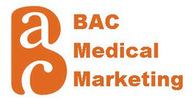
 RSS Feed
RSS Feed
